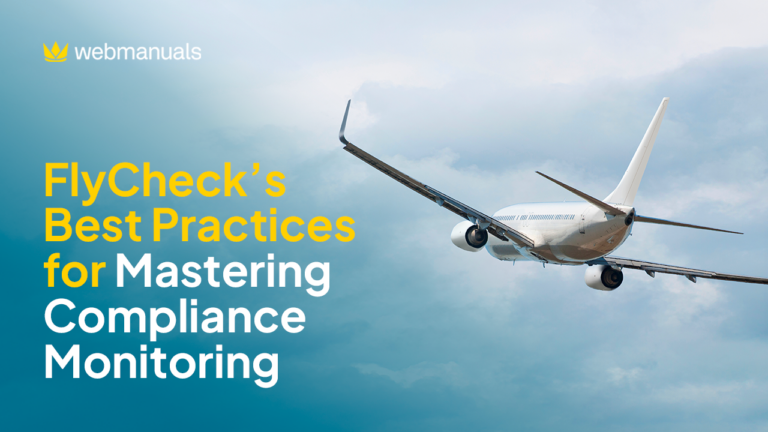In the world of aviation, where every moment demands precision and responsibility, Fredrik Kämpfe, Director of Aviation Industry Affairs at the Swedish Aviation Industry Group and a seasoned professional with a wealth of experience, brings forth a compelling narrative on the critical importance of safety. In his presentation during GO DIGITAL, Kämpfe not only delves into personal experiences but also sheds light on the evolving landscape of aviation and the imperative need for collaboration.
“Every day is a good day for improving safety”, says Kämpfe. This statement serves as a poignant reminder to aviation professionals, challenging them to reflect on their daily actions and contributions to safety. Kämpfe emphasizes the ongoing commitment required to ensure safety standards not only meet regulatory requirements but exceed them. The call to improve safety every day becomes a rallying cry, setting the tone for a presentation that underscores the critical nature of consistent dedication to safety measures.
Sharing Stories, Sharing Safety: The Essence of Progress
Transitioning from the individual commitment to safety, Kämpfe explores the collaborative aspect that defines the aviation industry’s safety journey. Drawing from his personal and professional experience, he highlights the significance of sharing stories and experiences among professionals. In recounting a personal incident involving a cargo miscalculation, he underscores the missed opportunities when information isn’t communicated effectively.
“I worked at Arlanda Airport as a ramp agent and load controller. One day, just minutes before I was going to hand over the loadsheet to the captain, the newspaper guy was coming (routinely) very late with newspapers. Nothing out of the ordinary, but when the aircraft was taxiing out, I saw the delivery note saying he loaded 250 kilos of newspapers in front of the Fokker 50 instead of the normal 30 kilos, and I immediately thought that perhaps the center of gravity could be compromised, but he was already away. Fortunately, the flight went without problems. When I reported the mishap, I found that other colleagues had experienced late delivery of the newspapers, and it was always more than what was on the delivery slip, but no one had really talked about it. So, if we had just shared this simple piece of information, we would have improved safety.”
Kämpfe’s message is clear: regulations and technology alone are insufficient; it’s the collective wisdom gained through shared experiences that propels the aviation community forward in its quest for enhanced safety.
The Changing Face of Aviation: Challenges and Opportunities
As the presentation unfolds, Kämpfe broadens the scope to address the dynamic and evolving landscape of aviation. Acknowledging the influence of political, societal, and environmental factors, he introduces the concept of “climate safety.” This forward-thinking approach urges the industry to not only adhere to existing regulations but to actively anticipate and mitigate risks associated with climate change. Kämpfe’s vision emphasizes the need for the aviation community to be proactive in adapting to the changing world, positioning safety as an integral part of future endeavors.
“It’s not enough to share information about what has happened and safety between the brothers and sister companies. We also have to start cross-feeding from branch to branch to see where the elements of risk are in the chain of delivering aviation safety.”
Towards Sustainable Aviation: A 30-Year Journey
Kämpfe shifts gears to present a compelling vision for the future – one that is rooted in sustainability. He outlines a 30-year journey toward sustainable aviation, incorporating advancements in air operation efficiency, new fuels, and emerging technologies like electric and hydrogen-powered aircraft. The urgency of adopting environmentally friendly practices is emphasized, and Kämpfe introduces the industry’s responsibility to meet ambitious targets for sustainable aviation fuel by 2050.
“I think we’re coming to a crossroads where either we evolve or we dissolve. We have to make this business not only the best business, the safest business but also the most environmentally friendly business that we have. That’s the focus that people in media give to aviation; we have the eyes on us for good reasons, but we should also use that in the best way possible and make sure that we meet the challenges ahead.”
The presentation challenges professionals to embark on this transformative journey, acknowledging that safety remains a central consideration amidst these advancements.
Electrification and Emerging Technologies: A Glimpse into the Future
Delving into the technological frontier, Kämpfe provides a glimpse into the electrification of aviation. He explores the expanding role of drones, the imminent arrival of EVTOL aircraft, and the transformative potential of electric and hybrid technologies. While highlighting the opportunities presented by these innovations, he candidly acknowledges the safety challenges that accompany such advancements. Kämpfe paints a picture of a future where electric flight becomes commonplace, and professionals must navigate the evolving landscape with a keen eye on safety protocols.
“We cannot just learn from experience and accidents to increase safety. Now, we must learn from the things that have never happened. But we also have to learn from these different new activities and new groups so that we can continue to become better at Aviation.”
Responsibility and Collaboration: The Key to a Safer Tomorrow
In the final segment, Kämpfe brings the focus back to the individual and collective responsibility for safety. He emphasizes that safety is never anyone else’s responsibility – it’s always your own responsibility as well as a shared commitment. Kämpfe challenges each professional to contribute to building a safety culture, adapting to changing times, and welcoming new generations into the industry. The closing message resonates as a call to action: safety is not a static achievement but a continuous effort requiring communication, collaboration, and a collective determination to evolve for a safer aviation future.
“I think that you are sitting on a golden nugget [GO DIGITAL], a diamond of safety because you can reach out to different areas of this aviation ecosystem where you can create and talk to each other. So, use those platforms, exchange information, and learn from each other because at the end of the day, if we don’t communicate, we wouldn’t have reached a long way. And I think that we can take the next steps if we do it together.”




